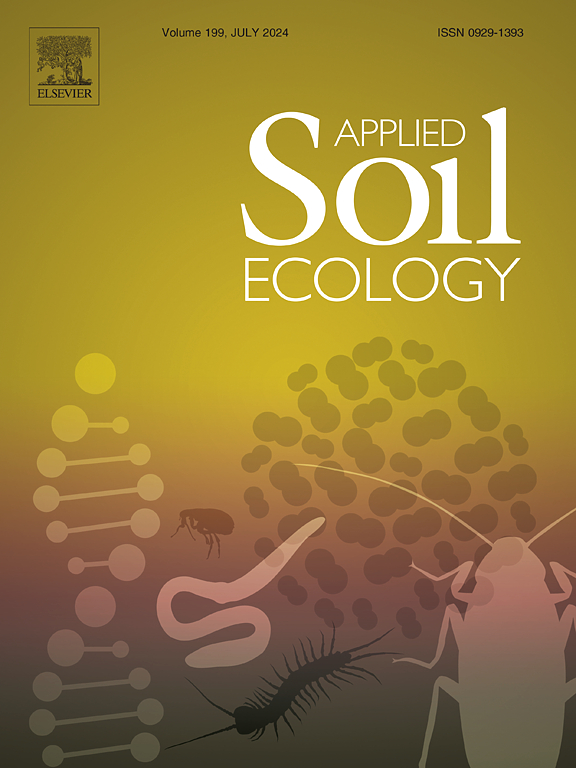Earthworm and enchytraeid indicator taxa of different land-use types identified using soil DNA metabarcoding
IF 4.8
2区 农林科学
Q1 SOIL SCIENCE
引用次数: 0
Abstract
Earthworms and enchytraeids play an important role in biogeochemical cycles and are good indicators of soil fertility. However, assessing their assemblages is difficult, mainly because the methods to identify them require expert knowledge, which becomes a technical challenge when surveying large areas. Soil DNA metabarcoding is a promising method that enables the identification of individual species directly from a bulk composite sample in large field experiments. Here, we investigated in parallel both earthworm (family Lumbricidae) and enchytraeid (family Enchytraeidae) assemblages in three land-use types (arable land, grassland, forest) across 29 Swiss Soil Monitoring Network (NABO) sites, using high-throughput amplicon sequencing of marker genes. For both earthworms and enchytraeids, α-diversity was higher in grasslands than in arable land and forests, and it was significantly affected by soil physico-chemical, climate and biological properties, especially pH and climate properties. In addition, we found negative correlations between earthworms α-diversity and soil total carbon (TC) content and the soil carbon to nitrogen ratio. Using the DNA metabarcoding, we observed sequences of Aporrectodea nocturna in soils with low pH, while other Aporrectodea species occurred in soils with high pH. We identified Bimastos rubidus in soils with low pH but higher TC, total nitrogen, organic C, and low silt content, while the enchytraeids Cognettia sphagnetorum and Cernosvitoviella atrata occurred in forest soils with high water and organic matter contents. We identified some indicator taxa for the different land-use types, for grassland: Aporrectodea icterica, Lumbricus rubellus, Marionina communis, Fridericia bisetosa and Fridericia connata; arable land: Allolobophora chlorotica, Enchytraeus dichaetus, Achaeta iberica, Prodtodrilus antipae and Fridericia tuberosa; and for forest: Octolasion cyaneum, Octolasion lacteum and Cognettia chlorophila. Although these indicator taxa are unlikely to provide information about the effect of land-use change on soil biodiversity at large spatial scales, these species do drive assemblage differences between land-use types. Soil DNA metabarcoding could therefore assist land managers in monitoring soil biodiversity and quality.

求助全文
约1分钟内获得全文
求助全文
来源期刊

Applied Soil Ecology
农林科学-土壤科学
CiteScore
9.70
自引率
4.20%
发文量
363
审稿时长
5.3 months
期刊介绍:
Applied Soil Ecology addresses the role of soil organisms and their interactions in relation to: sustainability and productivity, nutrient cycling and other soil processes, the maintenance of soil functions, the impact of human activities on soil ecosystems and bio(techno)logical control of soil-inhabiting pests, diseases and weeds.
 求助内容:
求助内容: 应助结果提醒方式:
应助结果提醒方式:


